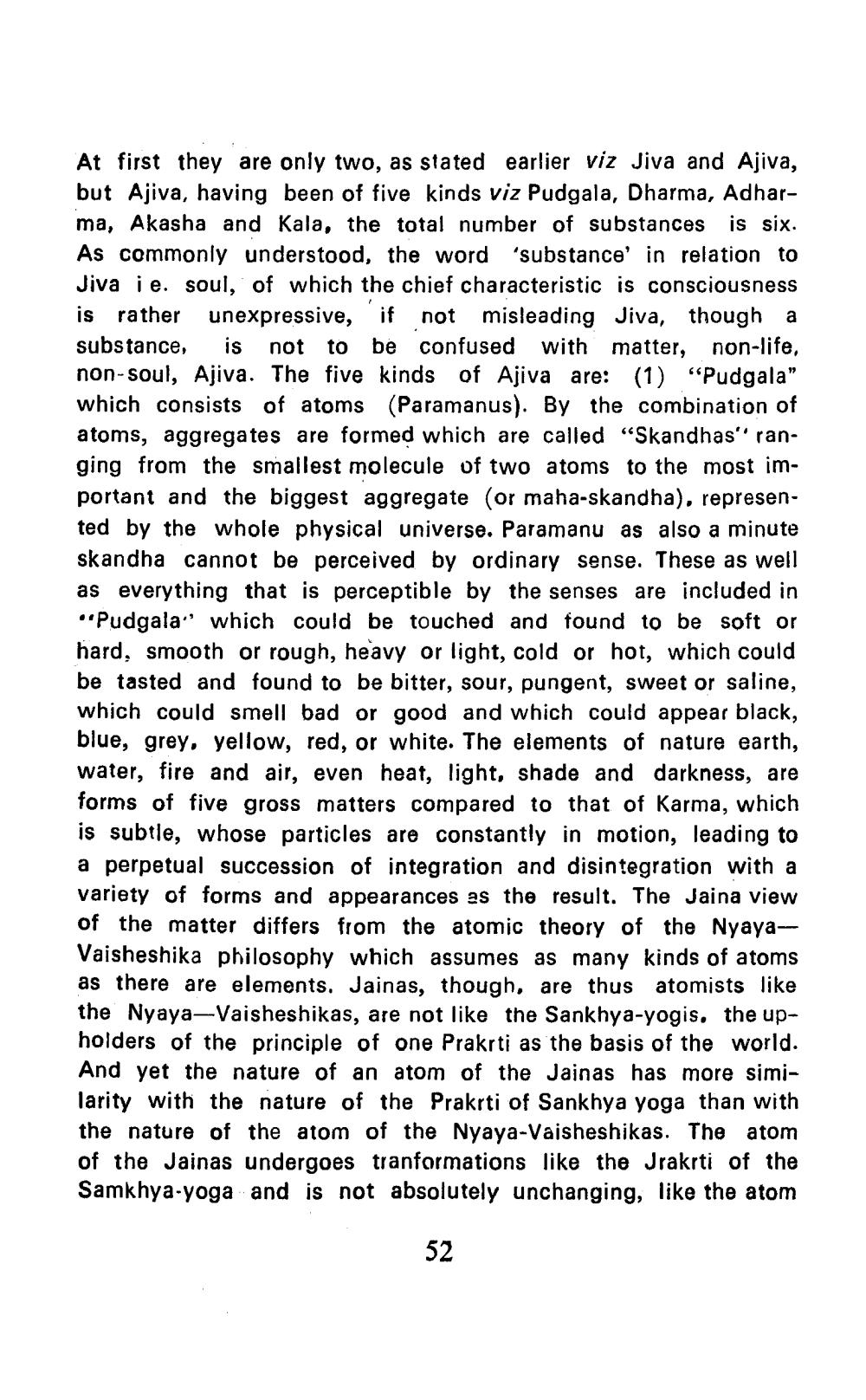________________
At first they are only two, as stated earlier viz Jiva and Ajiva, but Ajiva, having been of five kinds viz Pudgala, Dharma, Adharma, Akasha and Kala, the total number of substances is six. As commonly understood, the word 'substance' in relation to Jiva i e. soul, of which the chief characteristic is consciousness is rather unexpressive, if not misleading Jiva, though a substance, is not to be confused with matter, non-life. non-soul, Ajiva. The five kinds of Ajiva are: (1) "Pudgala" which consists of atoms (Paramanus). By the combination of atoms, aggregates are formed which are called “Skandhas'' ranging from the smallest molecule of two atoms to the most important and the biggest aggregate (or maha-skandha), represented by the whole physical universe. Paramanu as also a minute skandha cannot be perceived by ordinary sense. These as well as everything that is perceptible by the senses are included in
Pudgala" which could be touched and found to be soft or hard, smooth or rough, heavy or light, cold or hot, which could be tasted and found to be bitter, sour, pungent, sweet or saline, which could smell bad or good and which could appear black, blue, grey, yellow, red, or white. The elements of nature earth, water, fire and air, even heat, light, shade and darkness, are forms of five gross matters compared to that of Karma, which is subtle, whose particles are constantly in motion, leading to a perpetual succession of integration and disintegration with a variety of forms and appearances as the result. The Jaina view of the matter differs from the atomic theory of the NyayaVaisheshika philosophy which assumes as many kinds of atoms as there are elements. Jainas, though, are thus atomists like the Nyaya--Vaisheshikas, are not like the Sankhya-yogis, the upholders of the principle of one Prakrti as the basis of the world. And yet the nature of an atom of the Jainas has more similarity with the nature of the Prakrti of Sankhya yoga than with the nature of the atom of the Nyaya-Vaisheshikas. The atom of the Jainas undergoes tranformations like the Jrakrti of the Samkhya-yoga and is not absolutely unchanging, like the atom
52




